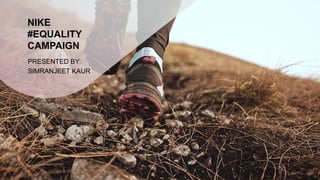
In a world where everyone is striving to stand out and be unique, it’s easy to get lost in a sea of generic logos. But fear not, my friends, for there is a solution that will set your brand apart from the rest: inclusive logos. Yes, you heard me right. Gone are the days of exclusionary design/” title=”Law Firm Logo Design”>branding – it’s time to welcome all shapes, sizes, and colors into the logo family. So grab your rainbow palette and let’s dive into the wonderful world of creating brands for all.
Defining Inclusive Logos and Branding
Have you ever looked at a logo and thought, “Wow, that really speaks to me as a person of all shapes and sizes”? No? Well, that’s because inclusive logos and branding are not as common as they should be. But fear not, my friends, for we are here to shed some light on what it means to have inclusive logos and branding!
So what exactly is an inclusive logo, you ask? Well, it’s a logo that doesn’t discriminate against anyone based on their race, gender, age, or any other defining characteristic. It’s a logo that says, “Come one, come all, we welcome everyone!”
When creating inclusive branding, it’s important to consider the following elements:
Color: Choose colors that are universally appealing and don’t alienate anyone.Images: Use diverse images that represent a variety of people and experiences.Language: Avoid using language that may be exclusionary or offensive to certain groups.
Remember, inclusivity is not just a buzzword – it’s a way of life. So the next time you’re designing a logo or creating a brand, think about how you can make it more inclusive. Who knows, you might just change the world, one logo at a time!
diversity-in-branding”>The Importance of Diversity in Branding
Imagine a world where every brand looked and sounded exactly the same. Boring, right? Diversity in branding is crucial for a multitude of reasons, and without it, our shopping experiences would be as bland as unseasoned tofu.
Firstly, incorporating different backgrounds and perspectives into your brand helps you stand out in a crowded marketplace. With a diverse team behind your brand, you can tap into a wide range of ideas and creativity that will set you apart from the competition. Plus, who wouldn’t want their brand to be as unique as a unicorn riding a skateboard?
Secondly, diversity in branding shows that you care about inclusivity and representation. By showcasing a variety of voices and faces in your branding, you are sending a message that everyone is welcome and valued. It’s like throwing a party where every type of person is invited – who wouldn’t want to join that celebration?
So, let’s embrace the kaleidoscope of diversity in branding. Let’s celebrate the differences that make us all unique and use them to create brands that are as vibrant and exciting as a disco ball at a ’70s themed party. After all, life would be pretty dull if we all looked and sounded the same. Here’s to a world of brand diversity – may it be as colorful and varied as an artist’s palette!

Strategies for Creating Inclusive Logos
When designing a logo, it’s important to consider inclusivity. Here are some strategies to ensure your logo is welcoming to all:
- Think about color: Avoid using colors that may exclude certain demographics. Opt for a diverse color palette to represent inclusivity.
- Use symbols wisely: Make sure the symbols in your logo are universally understood and don’t have any negative connotations.
- Represent diversity: Include elements in your logo that represent diversity, such as different shapes, sizes, and backgrounds.
Remember, your logo is often the first thing people see when interacting with your brand. By implementing these strategies, you can create a logo that is not only visually appealing but also inclusive to all.

Incorporating Cultural Sensitivity in Branding
When it comes to branding, incorporating cultural sensitivity is key to connecting with diverse audiences. You don’t want to end up like that one brand who thought cultural appropriation was a good marketing strategy, do you? (We won’t name names, but you know who you are!)
So, how can you ensure your branding is culturally sensitive? Here are a few tips to get you started:
- Do your research: Before using any cultural symbols or references in your branding, make sure you understand their significance and history. Don’t just slap on a random Japanese character because it looks cool – you might end up with a very embarrassing translation fail!
- Consult with diverse professionals: Get input from people of different backgrounds to ensure your branding resonates with a wide range of audiences. It’s not enough to have a token diversity hire – actually listen to what they have to say!
Remember, cultural sensitivity isn’t just a buzzword – it’s an essential aspect of successful branding in today’s global marketplace. Embrace diversity, educate yourself, and above all, don’t be that brand who ends up in a PR nightmare because they didn’t do their homework!

Case Studies of Successful Inclusive Branding
First up, let’s talk about the iconic brand Nike. They have been a trailblazer in inclusive branding, embracing diversity in their advertising campaigns. Through partnerships with athletes of diverse backgrounds and abilities, Nike has shown that representation matters. Their famous “Just Do It” slogan speaks to everyone, regardless of their background or abilities. This has endeared them to a wide range of consumers, making them a powerhouse in the sports apparel industry.
Next, we have the beauty brand Fenty Beauty by Rihanna. This brand revolutionized the beauty industry by offering a wide range of shades for people of all skin tones. By including shades for underrepresented groups, they have gained a loyal following of consumers who feel seen and heard. Rihanna’s personal commitment to diversity and inclusion has translated seamlessly into her brand, making it a standout in the competitive beauty market.
Lastly, let’s not forget about Ben & Jerry’s. This ice cream brand has always been a champion of social justice causes, and their commitment to inclusivity is no exception. By creating flavors inspired by LGBTQ+ activists and partnering with organizations like Black Lives Matter, Ben & Jerry’s has shown that inclusivity is not just a trend, but a core value of their brand. Plus, who can resist their delicious ice cream?
Benefits of Embracing Diversity in Logo Design
Have you ever considered the ? Let me tell you, it’s a game-changer! By incorporating a wide range of cultural influences, colors, and shapes into your logo, you can create a design that truly stands out from the crowd.
One of the biggest perks of embracing diversity in logo design is the ability to appeal to a wider audience. With a logo that reflects a variety of cultures and traditions, you can connect with people from all walks of life. Plus, it shows that your brand is inclusive and welcoming to everyone.
Another benefit of embracing diversity in logo design is the opportunity to celebrate and showcase different perspectives. By incorporating elements from various cultures, you can create a logo that tells a story and sparks curiosity. It’s like a mini art exhibit that people can’t help but admire!
So, don’t be afraid to get creative and think outside the box when it comes to logo design. Embrace diversity, embrace uniqueness, and watch your brand shine like never before!
FAQs
What is the importance of creating inclusive logos?
Well, let’s put it this way – have you ever tried to shop for a bedazzled cowboy hat without knowing where the sparkly rhinestones were sourced from? Inclusivity ensures that your brand speaks to a wider audience and resonates with people from all walks of life. Plus, it’s just the right thing to do.
How can I make my logo more inclusive?
Oh, darling, it’s simple! Just like adding a splash of glitter to your morning coffee, you can infuse your logo with diverse colors, shapes, and themes that reflect the beautiful diversity of our world. Embrace the rainbow, my friend!
What are some common mistakes to avoid when creating a logo?
Ah, where do I begin? Avoid overusing cliches, stereotyping, or cultural appropriation. Imagine trying to sell a hamburger in outer space – it just doesn’t make sense! Keep it classy, keep it respectful, and keep it inclusive.
Can inclusive logos really make a difference in how consumers perceive a brand?
Absolutely! Think of it like choosing a hair color that perfectly complements your skin tone – it’s all about finding the right balance. By creating logos that embrace diversity and inclusivity, you’ll show your audience that you care about them beyond just selling products. And that, my friend, is the key to building trust and loyalty.
So, what are you waiting for?
It’s time to ditch those exclusionary logos and embrace inclusivity in your branding. Remember, a logo isn’t just a pretty picture – it’s the face of your brand, representing your values and beliefs. By creating a logo that is welcoming and inclusive, you’ll not only attract a wider audience but also show that your brand is committed to equality and diversity. So get creative, get thinking, and get designing – the world is waiting for your inclusive brand to shine!











